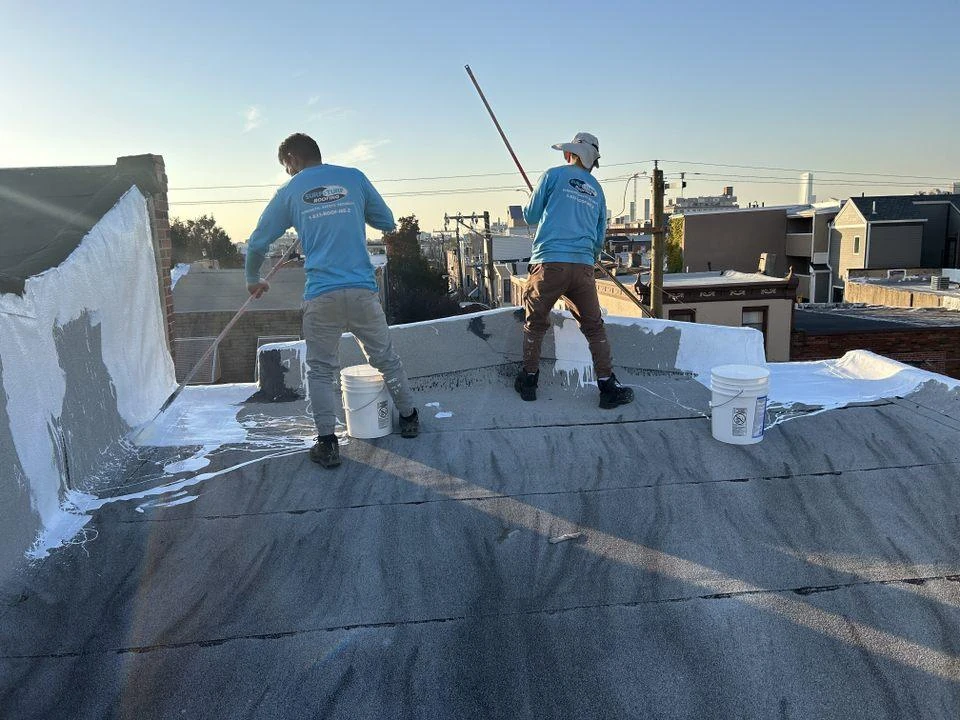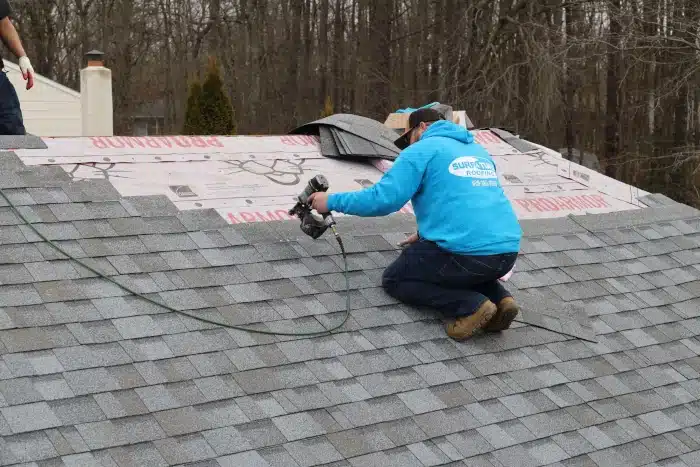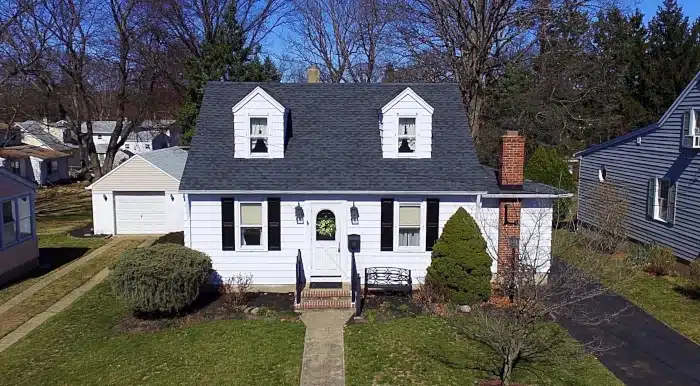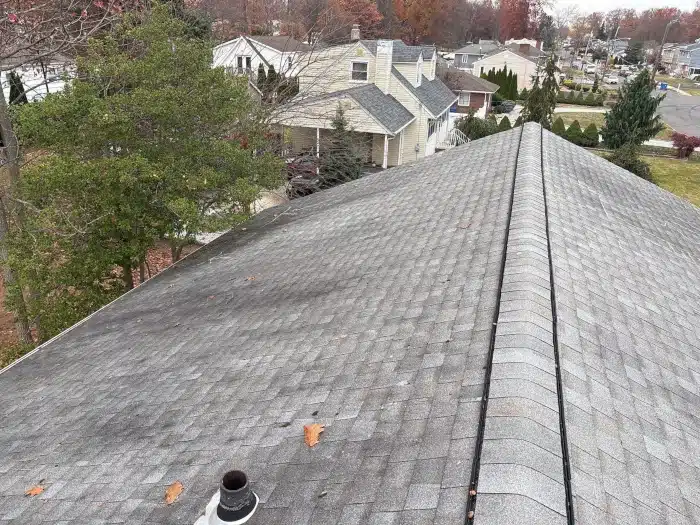Opting for a flat roof for your home is the most obvious choice unless you live somewhere where it snows heavily. That’s because laying flat roofs doesn’t eat up as much labor cost as a mansard or dormer roof would. Also, maintaining flat roofs is easier and safer because of their build and easy access.
However, all these pros aside, flat roofs also face structural and maintenance problems that can weaken them. In fact, roof contractors say that they receive as many requests for flat roof repairs as they do for more structured ones.
Therefore, we’re writing this hands-on guide to educate you about the problems you may encounter with flat roofs repairs and then the solutions to tackle them. If you like being informed about issues that may come your way, keep reading, and let’s see what setbacks your flat roof may face.
Top Issues with Flat Roofs Repairs
Without any further ado, let’s get to the issues flat roofs repairs face and how you can contain them before the damage is too severe to be fixed.
Ponding Water
Ponding water is a common issue for flat roofs, i.e., the water that remains stagnant on the surface for more than 48 hours after rainfall.
The minimal slope of flat roofs fails to provide adequate water drainage and results in structural damage. But what causes ponding water on flat roofs?
First of all, flat roofs are not entirely flat; they should have a slight slope to enable water runoff. But when there’s inadequate sloping during the installation process, it prevents water from draining properly.
Also, debris, like leaves, twigs, and dirt, can block drains and hinder water flow, causing accumulation. And since buildings can settle with time, the materials used for the roof structure may sag, creating low spots where water can collect.
Solutions to Ponding Water
Now we know what causes water to pool on the roof, but how to overcome it? Here are some tips from pro roofers that can solve this nuisance:
Better Drainage Systems
Adding more drainage points can improve water flow and reduce ponding. But, you must position these new drains strategically to capture and divert water.
It’s also important to keep existing drains clear of obstructions with regular cleanings, especially after heavy storms or during fall when leaves are likely to block drains.
Adjust Roof Slope
Tapered insulation means installing layers of insulation that taper off towards the drains to increase the roof’s slope and direct water toward drainage points. This insulation is an effective and economically feasible solution for existing flat roofs experiencing ponding.
However, in cases where severe sagging or inadequate initial slope is the issue, bigger structural adjustments are needed. It could mean elevating parts of the roof framework to create a more pronounced slope and prevent water from pooling.
Roof Leaks and Moisture Infiltration
Even though flat roofs are practical, they are notorious for their vulnerability to leaks and moisture infiltration. As the inherent design of flat roofs does not facilitate rapid water runoff, it always leads to accumulated moisture and, subsequently, several associated issues.
Leaks in flat roofs typically come from punctures, cracks, or deteriorated seams in the roofing material. These vulnerabilities can cause extensive damage to the building’s interior. For example, moisture infiltration can compromise the structural integrity of the building and cause you to have costly flat roofs repairs.
Standing water also increases the risk of these leaks because it can seep through even small imperfections in the roof’s membrane. This moisture can degrade the roofing materials and make them more susceptible to further damage.
Solutions to Leaks
Leaks are serious concerns and ignoring them can compromise any building’s integrity. So, if you notice leaks that give way to moisture, here’s how to fix them:
Routine Inspections
Regularly scheduled inspections help identify problem areas and assess the health of the roof. During these inspections, special attention should be paid to the roof’s membrane to search for any signs of wear and tear, such as blistering, cracking, or bubbling. It is also important to check for blocked drains and debris that could impede water flow and cause ponding.
Seal Cracks and Seams
High-quality roofing sealants help address minor cracks and reinforce seams, which is a practical approach to fixing leaks. You should carry out this task with the help of professionals who can ensure that the sealant is applied correctly and uniformly, covering all necessary areas thoroughly.
Blistering and Bubbling
Blistering and bubbling are caused by trapped air or moisture under the roofing membrane. When they form, they compromise the roof’s integrity and weaken the material, which makes it more susceptible to severe damage.
The main culprit behind blistering and bubbling is usually ponding water, which we discussed at the beginning, so you can guess how severe the issue is. When water doesn’t properly drain off, it can seep into the roofing material, especially if there are any small punctures or tears.
Solutions to Address Blistering and Bubbling
If left unattended, blisters and bubbles can burst and leave open areas where water can enter more freely. Therefore, if you notice that these issues are settling in, follow these ways to mitigate them:
Professional Assessment
First of all, a professional assessment must be done to determine the extent of the blistering and bubbling. This evaluation will help in understanding whether the blisters are superficial or if they pose a serious threat to the roof’s integrity.
Repair Procedures
If the initial assessment’s results call for quick mitigation, it’s time to remove the blisters. Removing blisters begins with carefully cutting out the blistered sections of the roofing material. But, this must be done with precision to avoid further damage to unaffected areas.
After removal, you must allow the underlying area to dry thoroughly, as residual moisture can undermine the flat roof repairs. When the area is dry, a patch made from compatible roofing material is applied. Going for a high-quality adhesive and patch material will ensure that the repair gels with the existing roof and restores its waterproof integrity.
Flashing Failures
Flashing is the material used at the perimeters and around objects protruding from the roof, like vents and skylights, as well as along seams. It plays a crucial role in waterproofing these vulnerable points, but when it fails, it becomes a primary pathway for water to enter the building, which results in extensive flat roof repairs.
These materials can degrade due to exposure to the elements like UV rays, temperature fluctuations, and harsh weather conditions. Notably, metal flashings are susceptible to rust and corrosion in environments with high moisture or corrosive atmospheric conditions.
Solutions to Flashing Failures
The most immediate effect of flashing failure is water leaking into the building, which can damage the whole structure. So, before things go out of hand, here’s how we fix flashing failures:
Securing Loose Flashing
If your roof’s flashing has come loose but is in good condition, it can often be re-secured with appropriate fasteners. It is a relatively straightforward fix that can extend the life of the existing flashing if you hire expert roofing contractors.
Replacing Damaged Flashing
But if the flashing is too deteriorated or damaged to be repaired in any way, you’ll have no option but to replace it. To do this, the roofers will remove the old flashing and install new materials that match the roof’s requirements. They must ensure the new flashing is installed correctly to provide a watertight seal.
Alligatoring
Alligatoring might be a new term for you, but most of us have seen it on old roofs. It’s named for its resemblance to the scaled skin of an alligator, and this pattern of cracks results from the roofing material losing its elasticity. It’s generally triggered by long-term exposure to the sun and other environmental stressors and indicates aging or deterioration of the roof surface.
As a flat roof begins to exhibit signs of alligatoring, the cracks allow water to penetrate the roof and make way for leaks that can damage the structures and interior spaces.
Strategic Solutions to Alligatoring
If alligatoring is not addressed promptly, the integrity of the entire roof system may be at risk, which you cannot overlook. Therefore, when this problem sets its foot in, you have these options to fix it:
For Extensive Alligatoring: Replace Old Material
Replacement is inevitable if alligatoring is widespread and the roof material is nearing the end of its useful life. Doing it involves removing the old roofing material and installing a new, more resilient surface. Notably, modern roofing materials designed for flat roofs, such as PVC or TPO membranes, offer better durability and resistance to environmental factors that cause alligatoring.
For Less Severe Cases: Apply a Protective Coating
Luckily, applying a silicone or acrylic roof coating can provide a cost-effective solution in situations where the alligatoring is not yet pervasive. These coatings seal the cracks and create a protective barrier against moisture and UV damage. Since they also reflect sunlight, they reduce the roof’s surface temperature and slow the aging process. Regular application of these coatings as part of a maintenance schedule can noticeably increase the durability of an asphalt flat roof.
Your Roof is Your Home’s Hat; Make Sure it’s Foolproof with Flat Roofs Repairs
Your roof protects everything inside your home as a hat shields you from the elements. So don’t wait for small problems to turn into expensive repairs and do regular inspections and timely maintenance to keep it strong.
If you notice signs of damage or want peace of mind that your home is solid from all aspects, contact our flat roofs repairs professionals at Surf & Turf Roofing today to assess and protect your roof.
A foolproof roof means a safe and secure home—call us today and let us take it from there.
FAQs
How often should I inspect my flat roof?
It’s recommended to inspect your flat roof at least twice a year—once in the spring and once in the fall. It’s also good to inspect after any severe weather events to catch damage early.
Can flat roofs handle heavy rainfall?
Yes, flat roofs are designed with drainage systems to handle rainfall. However, if the drains become clogged or the roof develops low spots, ponding water can become an issue.
How long does a flat roof last?
A well-maintained flat roof can last anywhere from 20 to 30 years, depending on the material and quality of installation.








